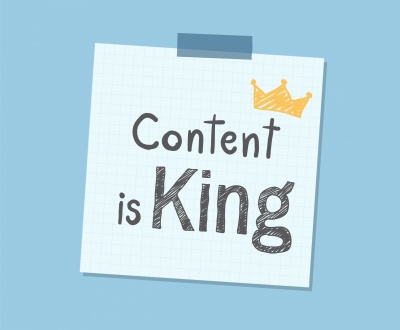How to Select the Social Media Channels that Align with Your Digital Marketing Strategy
As marketers, it’s no secret that we are all tasked with including social media as part of digital strategy. It’s proven itself to be a powerful way of reaching our audiences, engaging them, building relationships, and gaining competitive advantage. However, the sheer number of different social media platforms to choose from makes selecting the most effective ones a challenge, to say the least.
Nevertheless, we must choose or risk losing out on the plethora of benefits that social media has to offer when done right. Businesses all over the world have achieved substantial gains across many key metrics by incorporating social media elements into their marketing plans. If you’re still questioning the value of social media, here are some insights that may finally convince you of it’s critical nature.
Why You Need to Use Social Media For Business
Social media has progressed far beyond the early days of cat videos and sharing vacation pics with your family. Now, it’s a powerful tool in the hands of consumers to research products and services, acquire customer service, share recommendations, and so much more. Not only that, but social media marketing synergizes with many other parts of your digital strategy, particularly your SEO efforts, to help your search engine rankings improve and boost your discoverability across the web.
HubSpot recently published a collection of social media statistics that prove definitively that social media is no longer an option for businesses. It’s essential. Here are a few stats that really stood out to us from this report.
- 90% of Millennials, 77% of Gen X, and 48% of Boomers are active social media users
- 54% of customers browsing products use social media as a research source
- 74% of consumers share product videos on social media channels
- 71% of consumers who have a positive interaction with a business on social media are likely to recommend that business to friends and family
- 76% of consumers have purchased a product they discovered through social media
Still not convinced? Check out this perspective-changing video from the creator of Socialnomics, Erik Qualman. It will challenge your assumptions and open your eyes to how ubiquitous social media has become in our lives.
So, the benefits of social media are clear. The question now becomes ‘how do you know where to be?’ in order to achieve those types of benefits for your own business. Let’s start by taking a look at some of the most popular social media channels, and what they’re all about.
Pros and Cons of Popular Social Media Channels
Pros: The biggest advantage of Facebook is quite simply the sheer volume of users on the platform. It’s by far the most populous social media platform with billions of users all over the world. Facebook can support many different content formats natively, including text posts, images, and videos, as well as providing a great deal of integration capabilities with websites and most popular CMS platforms. Facebook is generally considered the default social media platform for all businesses due to the unequaled user base and the ability to distribute all types of media with ease. Facebook’s paid social advertising tools are extremely powerful, allowing precision targeting of users across many different dimensions such as demographics, personal interests, and more.
Cons: Although Facebook has been universally adopted by users of all age groups, this has had the side effect of it falling out of favour with many of the younger demographic segments that set trends and whose attention is often in high demand. In a nutshell, Facebook doesn’t have the ‘cool factor’ that some newer social media channels have, such as TikTok or Snapchat. In addition, Facebook’s newsfeed algorithms are such that it can be challenging for businesses to achieve the desired levels of visibility. This often drives businesses towards Facebook’s paid advertising tools out of necessity.
Pros: Instagram is an extremely popular photo sharing social media platform that provides users with pre-configured filters and easy-to-use editing tools that have revolutionized how we approach photography in our everyday lives. Instagram is owned by Facebook, and as such seamlessly integrates into Facebook pages and profiles to simplify the sharing process and encourage cross-platform engagement. Instagram also supports video content, and is home to some of the most popular social media ‘influencers’ that brands around the world are connecting with to form marketing partnerships and gain exposure to their highly-engaged followers.
Cons: While Instagram can be viewed from a desktop, sharing content on the platform can only be done on mobile devices. Image-based social media content can also be more challenging to consistently produce when compared to text-based content. Image or video resources, as well as the time to create and compose content using these formats, is often in short supply for many businesses. Instagram can also be a challenge for businesses that are service-based or do not offer a product that can easily be represented visually.
YouTube
Pros: YouTube is the reigning king of video content, and is the second-largest search engine in the world, beaten only by Google itself. In addition, YouTube is owned by Google, which gives added weight to YouTube content in search results and is therefore an important element in search engine optimization. YouTube provides extensive analytics of video content performance that publishers can use to track engagement and leverage to inform their content strategy. YouTube videos are universal in compatibility across all types of devices, and are able to be directly embedded into other locations around the web, including websites, blogs, and other social media channels.
Cons: Video is the most resource-intensive type of content to produce. Good quality YouTube videos take time, budget, equipment, and planning to create. Poor quality videos can actually have a detrimental effect for businesses as they may result in criticism in the form of downvotes or negative comments. YouTube also requires a decent level of knowledge of search engine optimization techniques in order to ensure video content gets correctly indexed for the most relevant search terms.
Pros: Twitter is a social network that relies on rapid response and short, concise messaging between users. Although some businesses choose to use it as a simple distribution channel for content, the real benefits of Twitter come from interacting with the highly-engaged users, carrying on discussions and conversations with your audience. Because of this, Twitter offers many advantages for customer service outreach and brand building efforts. Images, video, and content links are shared among users constantly, and Twitter can be a significant traffic driver for brands that have an active presence here.
Cons: Twitter requires an always-on approach, as users demand prompt responses to queries and questions that they send to businesses through this platform. This means Twitter can take up a great deal of time if not managed properly. Individual tweets also have a relatively short shelf life compared to posts and content that gets shared on other social networks.
Pros: For business-to-business focused marketers, LinkedIn is an essential tool. Built as a professional networking platform, LinkedIn specialized in connecting people at the professional level for mutual learning, forming business relationships, and sharing of valuable content. Businesses can use LinkedIn to source talent, reach out to potential business partners, and network with other business professionals all over the globe. LinkedIn offers powerful paid advertising tools and expansive targeting of individuals based on job titles, company names, industry types, and many other dimensions.
Cons: Because of the ‘all business, all the time’ nature of LinkedIn, attempting traditional styles of advertising and promoting to the user base there is usually not received well. LinkedIn success requires relationship building to be placed as a priority element, and therefore requires a great deal of time in order to nurture relationships to the point where they achieve a direct business benefit.
Pros: An image-based social media platform that places heavy emphasis on exploration and discovery of content according to specific themes and categories. Each ‘pinned’ image links out to an external site that holds the full piece of content, like a product page, recipe, how-to guide, or other type of content. Pinterest categorizes their materials by themes, such as nature, fashion, food, pop culture, and countless other themes that users can browse and explore. This social media platform can drive massive amounts of traffic and can spread content far and wide thanks to the ability for users to curate their own lists of their favourite pinned images and links.
Cons: Although the lifespan on an individual pinned piece of content is quite long relative to most other social media sites, ongoing engagement with users on the site depends on a steady stream of new material. This means that Pinterest can consume a fair amount of time as good-quality images and value-rich content is needed to fulfil the expectations of users. Pinterest also leans heavily toward lifestyle brands, making it a less viable option for many types of business-to-business companies.
Other Social Networks
There are countless other social networks to choose from, as well. Two of the more prominent networks that have been created recently are TikTok and Snapchat, which are categorized as interactive media platforms focused on images and short videos. These newer social platforms are currently at the forefront with youth audiences, making them in high demand for brands aiming to reach this valuable demographic. However, these channels are challenging for many businesses to participate in due to their mobile-only format and emphasis on creative, whimsical content that need to be generated with high frequency.
As you can see, social networks come in a very diverse array of formats, each with their own advantages. Choosing the right mix for your business requires careful consideration of how the platforms work into your marketing strengths, and which ones offer the greatest synergies when used together as a part of your overall digital strategy. However, there are a few simple factors to consider at the beginning that will help narrow down the field and bring to light the most relevant social platforms for your business.
How to Choose Your Social Media Channel Mix
1 – Always Start with Your Audience
First and foremost, the audience must be right for your business. Most social media platforms will attract specific types of users based on how they work and the types of content that you’ll find there. Therefore, you need to select platforms that have a significant volume of active users that match your target market.
For example, Pinterest has a very high percentage of women users, and is oriented heavily toward lifestyle content. In this example, Pinterest may not be the ideal choice for a heavy industrial manufacturing business. However, for other types of companies, like fashion brands or home décor suppliers, Pinterest holds a great deal of potential business impact.
To get an idea of the audience characteristics of many different social networks, Pew Research Center has published a social media fact sheet that contains valuable data about user demographics and behaviour across different social media sites. The bottom line is, if you want to get results from social media, go where your audience is.
2 – Define Your Goals & Objectives
Whether you want to drive sales with product features, build your brand with gorgeous imagery, or generate valuable B2B leads, you need to have an objective in place for social media. This will help you determine which platform is best suited to meet that objective.
Brand building efforts are often aided by visual social media such as Instagram, YouTube and Pinterest. Direct product sales can be easily facilitated through Facebook. Generating business leads is where LinkedIn shines. Once you identified where your audience is in Step 1, choose a measurable objective that matches the strengths and capabilities of these platforms, and ensure that you have the means to track results.
3 – Identify the Value You Can Deliver & Match Content to the Channel
Bringing value to your audience in these channels is what will get them to engage with you, and get them to stick around. Determining the best platforms for your business also requires figuring out what kind of value you can deliver to your audiences in those channels. On LinkedIn, perhaps it’s thought-leadership articles that inspire your business partners. On YouTube, perhaps it’s helpful user guides or how-to videos that demonstrate your products in real-world scenarios.
Figure out what you can offer your audience that will help them, educate them, or entertain them. Now, think about the best way you can bring those things to life in the form of articles, videos, and imagery. This will help you match your value to a specific platform, and determine the format that your content should take, whether it be how-to videos, insightful infographics, educational blog posts, or artistic imagery.
4 – Consider the Competition
One more way to help determine where you should be in social media is to look at the activity of your competition in these channels, for two reasons. First, by identifying where your competition has a presence in social media you can benefit from observing the type of engagement they are receiving from the audience, the forms of content they are sharing, and the general pace of activity that they maintain. This information can help you identify the weak points of your competition, and take steps to plan your strategy in a way to capitalize on these opportunities.
Second, your analysis of competitive activity could reveal social media channels that are not being leveraged by competition at this time, and yet have a sizeable portion of your target market as part of their user group. Being the first player in your market to enter a new social media channel gives you the advantage of building a new community there from the ground up based on valuable content and positive engagement, and setting the standard for your industry in these channels.
Take the Next Steps in Creating a Powerful Social Media Strategy
If you’re feeling like social media is an under-utilized element of your digital marketing, or you are curious about expanding your presence to include new platforms, WMT can help your business craft an effective social media strategy.
We can help with new account creations and profile optimizations to ensure your business is represented well in social media in all the right places. We also offer content strategy and creations services to deliver valuable, engaging materials in a wide variety of formats for your social media audiences.
For businesses in need of a complete analysis of social media opportunities, WMT offers comprehensive Social Media Audits. SMM Audits cover all aspects of your current social media efforts, as well as those of your competition, and provide critical insights into your audience and their behaviour on social media.
Kick your social media marketing into high gear with WMT, and bring the full benefits of these platforms to your business. Contact our team of social media experts today and get started!
About the WMT Blog
We are a digital marketing company and want to share ideas as inspiration for current and prospective clients.
Questions? Contact us today for more information!
Request a quick estimate on any of our professional services designed to help brands increase exposure across all the most important touchpoints - SEO, Paid Search and Social Media.











